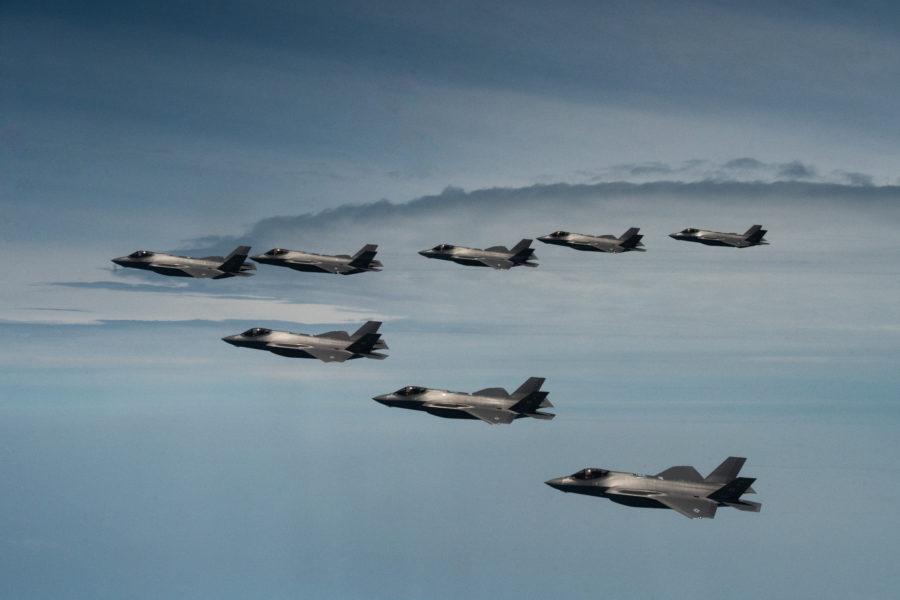More than 10 months beyond the originally expected goal, the F-35 Joint Program Office and Lockheed Martin have reached a “handshake deal” on Lots 15-17 of the fighter, which collectively will amount to only 375 aircraft.
No pricing information was included in the JPO’s July 18 announcement, which awaits formal signature. The announcement included no by-country or by-variant breakdown.
While the per-year production rate is unlikely to be the same across all three lots, at 375, production will average 125 aircraft a year. That’s well below the 156 per year that Lockheed Martin CEO James D Taiclet told stock analysts in a January conference call. In that call, acting Chief Financial Officer John Mollard said “the last thing you want is a sawtooth pattern” of up-and-down rates of production.
Negotiations had been dragging because of disagreements between Lockheed Martin and the JPO about volatile inflation and labor costs, both of which have shifted dramatically since the fall. Former JPO program executive officer retired Lt. Gen. Eric Fick had predicted a deal in November 2021, and then again in March of this year, but agreement on escalation costs proved elusive.
Both the JPO and Lockheed have suggested that the years-long pattern of lot-over-lot unit price reductions on the F-35 will end with Lot 15-17 because the package includes more-capable aircraft and because the military services have reduced their annual buys in anticipation of ramping up again when the Block 4 version of the airplane becomes available.
Pentagon acquisition and sustainment chief William A. LaPlante, in a statement released through the JPO, said he is pleased to announce the “handshake deal … on the basis of 375 aircraft.” He called the agreement a milestone for the program, the F-35 enterprise, “and our international partners.” He promised specifics when the contract is awarded.
“Our plan is to expedite contract award and deliver additional F-35 capacity” to the U.S. and its international partners, said Air Force Lt. Gen. Michael J. Schmidt, the new F-35 PEO, who assumed his post in the last few weeks.
The JPO said “significant progress” was made in negotiations over the last three months. There were “significant real-world challenges—including the COVID-19 pandemic, associated supply chain impacts, and workforce disruptions, and inflation.”
The JPO said the quantity “may change based on any adjustments made” by Congress in its fiscal 2023 budget negotiations “and any orders requested by international partners.”
The company and the JPO said they are working first to ink a deal for Lots 15 and 16 “as a high priority.” The JPO will “exercise a contract option for Lot 17 in FY 2023” after the fiscal 2023 budget is made final, in order to take into account any congressional adds or international orders.
Lockheed Martin said through a spokesperson that the deal was reached through “a collaborative effort” with the JPO, “our suppliers and teammates, “in the midst of COVID-19 impacts and decreased F-35 quantities.”
The company said the parties were “able to achieve a cost per jet lower than record-breaking inflation trends” and noted that the version negotiated “includes modernized hardware needed to power Block 4 capabilities,” such as the Tech Refresh 2 and 3 upgrades that offer increased processing power. These improvements “will ensure the F-35 remains the world’s most capable aircraft in production today.”
